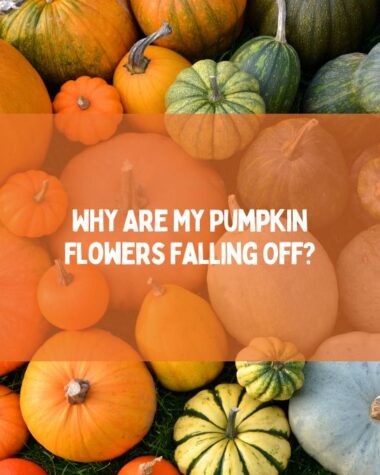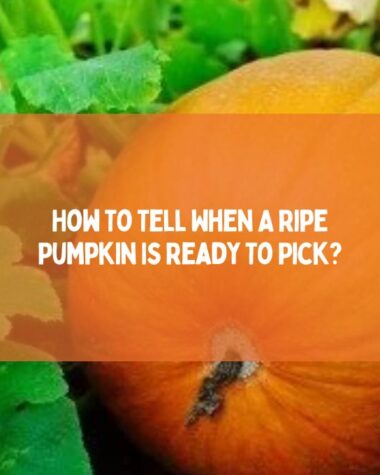To prevent animals from eating your pumpkins, there are several methods you can use, such as physical barriers, repellents, and planting companion plants. It is important to take preventative measures early in the growing season to ensure a successful pumpkin harvest.
Pumpkins are a popular crop for humans and animals, especially during the fall season. Animals such as deer, squirrels, and raccoons can damage or completely devour pumpkins before they are ready to harvest.
In this article, I will tell you how to prevent animals from eating your pumpkin plants. Let’s start.
9 Ways To Protect Your Pumpkins From Animals
Pumpkins are not only a favorite crop for humans but also for animals. To protect pumpkins from animals, several effective methods can be employed, such as using physical barriers like fences and netting, planting companion plants, and applying animal repellents.
These methods help to safeguard pumpkins from animal damage and ensure a successful harvest. By implementing these measures early in the growing season, you can increase your chances of producing healthy and bountiful pumpkins.
Related Reading
1. Chemical Vs Natural Repellents
Repellents are an effective way to protect pumpkins from animals that may be tempted to eat them. There are a variety of repellents available on the market, including chemical and natural options.
Chemical repellents such as sprays and granules use strong odors or tastes to deter animals from approaching the pumpkin patch. Natural repellents, such as garlic, pepper, or human hair, can also be used to create a strong scent that animals find unpleasant.
It’s important to follow instructions carefully and reapply repellents as needed, especially after rain or watering. Repellents are a good option for those who prefer not to use physical barriers or who have a large pumpkin patch that is difficult to protect with barriers alone.
2. Netting For Pumpkins
You can use lightweight bird netting or deer netting to cover the pumpkin patch. This will prevent animals from accessing the pumpkins while still allowing sunlight and rain to reach the plants.
The netting should be secured tightly to prevent animals from crawling under it or knocking it over. It is important to monitor the netting regularly to ensure it has not become tangled or damaged.
This method is particularly useful for keeping birds, squirrels, and raccoons away from your pumpkins. Larger animals like deer may still be able to push through the netting, so it’s important to take additional measures if deer are a concern in your area.
3. Scarecrows Around Pumpkin Plants
Scarecrows have long been used as a traditional method to prevent animals from eating crops, including pumpkins. The idea behind scarecrows is to create a visual deterrent for animals that may consider the pumpkin patch a source of food.
By placing a scarecrow in the middle of or near the pumpkin patch, the movement and presence of the scarecrow can help deter animals from coming too close.
The scarecrows may not work for all species, and additional preventative measures may need to be taken to protect your pumpkin crop.
4. Fencing Your Plants
A sturdy fence around your pumpkin patch can prevent larger animals like deer from accessing the area. You can use materials such as chicken wire, welded wire mesh, or electric fencing to build a strong and durable fence.
Ensure the fence is at least 8 feet tall to keep out deer. For smaller animals like squirrels, bury the bottom of the fence about a foot deep or bend the bottom a few inches outward to discourage digging.
It is important to ensure the fence is secure and there are no gaps or holes where animals can slip through.
5. Planting Companions
Planting companion plants alongside pumpkins is a natural and effective way to protect them from animals. Certain plants, such as marigolds, can help repel pests with their strong scent. Other plants, like corn and beans, can create a physical barrier around the pumpkin patch that animals are less likely to penetrate.
Planting herbs like mint and sage can attract beneficial insects like ladybugs and lacewings that prey on pumpkin-eating pests. By carefully selecting companion plants, you can help prevent animals from eating your pumpkins while also promoting a healthy and diverse garden ecosystem.
6. Harvest Early
One way to protect your pumpkins from animals is to harvest them early. As soon as your pumpkins reach maturity, you can pick them and bring them inside. This will prevent animals from being attracted to your pumpkins and potentially damaging them.
Another benefit of harvesting your pumpkins early is that it allows you to store them indoors, where they will last longer, rather than leaving them outside, where they may rot or attract pests.
7. Trained Your Dogs
Train your dog to guard the area where the pumpkins are growing. This can be done through positive reinforcement training, where the dog is rewarded for staying in the area and keeping watch.
You can also train your dog to chase away animals that may approach the pumpkins. It’s important to supervise your dog while they are guarding the pumpkins to ensure they do not damage the plants or eat the pumpkins themselves.
If you are using repellents or other methods to protect your pumpkins, make sure they are safe for your dog and do not pose a health risk.
8. Motion-Activated Sprinklers
Motion-activated sprinklers are an effective and humane way to protect your pumpkins from animals such as deer, squirrels, and raccoons. These sprinklers work by using a motion sensor to detect the presence of animals and then immediately spraying water to scare them away.
The sudden burst of water startles the animal and creates an unpleasant experience that discourages them from returning to your garden. Motion-activated sprinklers are easy to install and can be set to operate during specific times of the day or night.
9. Hang Shiny Objects
One way to protect your pumpkins from animals is to hang shiny objects around your pumpkin patch. Animals such as birds and deer are often scared off by shiny, reflective objects that move in the wind.
You can use old CDs, aluminum foil, or even wind chimes to create a shiny and reflective barrier. Hang the objects around the perimeter of your pumpkin patch or on nearby trees to deter animals from entering.
Related Reading
- Preventing The Spread Of Root-Knot Nematodes To Save Carrot Crops
- 12 Ways to Protect Your Tomatoes From Birds That Beyond Netting
- What Causes Holes In Cucumbers And How to Prevent It?
Conclusion
Protecting your pumpkin crop from animals is an important step in ensuring a successful harvest. Various methods can be used to deter animals from eating your pumpkins, such as physical barriers, repellents, and planting companion plants.
By taking preventative measures early in the growing season, you can ensure that your pumpkins remain healthy and intact until harvest time. With a little bit of effort, you can enjoy a bountiful pumpkin harvest without the interference of hungry animals.
Thanks for reading!







